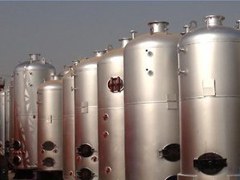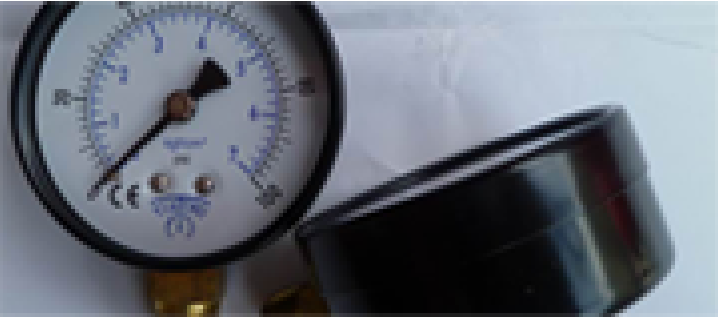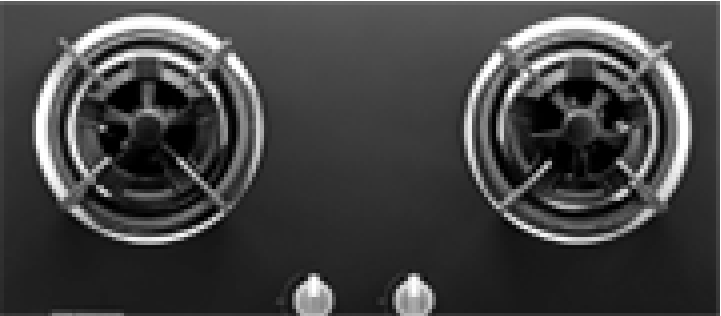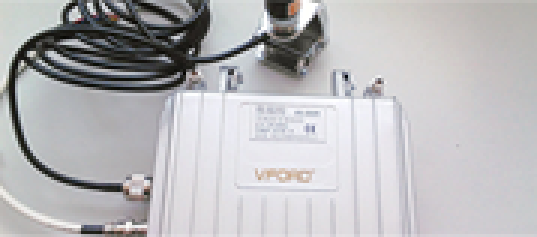92/42/EEC (Hot-water boilers)
Directive abbreviation: Efficiency requirements for new hot-water boilers fired with liquid or gaseous fuels
Directive name: Council Directive 92/42/EEC of 21 May 1992 on efficiency requirements for new hot water boilers using liquid or gaseous fuels
Council Directive 92/42/EEC of 21 May 1992 one efficiency requirements for new hot-water boilers fired with liquid organic fuels
Amendment No.: 93/68/EEC
New method instruction: y
Scope of application: 1.a. This Directive applies to appliances burning gaseous fuels for cooking, heating, hot water production, refrigeration, lighting, cleaning and, where appropriate, for the provision of water at a temperature not normally exceeding 105°C. Forced-ventilation burners and furnaces equipped with such burners may also be considered as appliances, hereinafter referred to as "appliances". b. In addition to forced-ventilation burners and furnaces equipped with such burners, safety devices, control devices or regulating devices and components that are traded separately on the market and are designed to be combined with devices burning gaseous fuels or installed together with such appliances to form complete appliances are referred to as "accessories". 2. Appliances specially designed for industrial processes used in industrial plants are not included in the scope defined in paragraph 1. 3. The gaseous fuel referred to in this Directive is any fuel in a gaseous state at a pressure of 1 bar and a temperature of 15°C. 4. In this directive, for a burner, "normal use" means when: a. the burner is correctly installed and used normally according to the manufacturer's instructions; b. the gas used is normally variable and flows normally at the supplied pressure; c. it is used for its intended purpose or can be used in a reasonably foreseeable manner. -- CE certification body
Scope of application: 1. This directive does not include the following equipment: - hot water boilers that can use different fuels, including solid fuels; - equipment for instantaneous preparation of hot water; - boilers used to burn fuels (industrial waste gas, biogas, etc.) whose performance is significantly different from that of liquid or gaseous fuels on the market; - furnaces and equipment mainly used for heating houses, whose auxiliary functions are to supply hot water for central heating and sanitary hot water; - equipment with a rated output lower than 6kW, using natural circulation and only used to produce and reserve sanitary hot water; - boilers manufactured only once.
Article 1
As part of the energy efficiency plan to improve the energy efficiency of the European Community, this directive stipulates the efficiency requirements for new hot water boilers (hereinafter referred to as "boilers") that are applicable to liquid or gas fuels and have a rated output between 4kW and 400kW.
Article 2
For the purposes of this Directive:
(a) Boiler: A combination of a boiler and a burner used to transfer the heat released by combustion to water;
(b) Gas appliances:
•Boiler body with burner installed;
•Burner mounted on the boiler body.
(c) Rated effective output (expressed in kW): the maximum heat output specified and guaranteed by the manufacturer that can be provided during continuous operation and that complies with the effective efficiency specified by the manufacturer;
(d) Effective efficiency (expressed in %): the ratio of the heat output transferred to the boiler water to the product of the net calorific value produced at a constant fuel pressure and the amount of fuel consumed per unit time:
(e) Partial load (expressed in %): the ratio of the effective output of a boiler operating intermittently or with an output less than the rated effective output to the rated effective output;
(f) Average boiler water temperature: the average of the water temperatures at the boiler inlet and outlet;
(g) Standard boiler: a boiler designed to limit the average water temperature;
(h) Domestic water heater: a boiler that supplies water to a central heating system and is installed in a fireplace recess as part of a domestic water heater/gas combustion system;
(i) Low-temperature boiler: a boiler that can continuously provide hot water at 35°C to 40°C and may produce condensation under certain circumstances, including condensing boilers using liquid fuel;
(j) Boilers installed in living spaces: Boilers with a rated effective output of less than 37 kW, used to supply heat to the part of the living space in which the boiler is installed by means of heat radiation from a boiler shell with an open expansion chamber, using natural circulation to supply hot water; such boiler shells should have clear instructions that they must be installed in living spaces.
Article 3
1. This Directive does not apply to the following boilers or equipment:
- hot water boilers capable of burning different fuels, including solid fuels;
- equipment for rapidly heating hot water;
- boilers burning fuels with characteristics significantly different from the liquid or gaseous fuels commonly sold (industrial waste gas, biogas, etc.);
- Cookers and gas appliances used primarily for heating the houses in which they are located and for supplying hot water for central heating and domestic hot water as an auxiliary function;
- Gas appliances with a rated output of less than 6 kW, using natural circulation and only for the production of domestic hot water for storage;
- Boilers manufactured on a one-time basis.
2. For dual-function boilers which have both the function of heating the premises in which they are located and the function of supplying domestic hot water, the efficiency requirements referred to in Article 5(1) of this Directive relate only to the heating function.
Article 4
1. Unless otherwise provided by the Treaty on the European Communities or other directives or Community provisions, Member States shall not prohibit, restrict or hinder the placing on the market or delivery into service of gas appliances and boilers which comply with the provisions of this Directive and bear the CE marking provided for in Article 7 of this Directive, indicating compliance with all the provisions of this Directive, including the conformity assessment procedures provided for in Articles 7 and 8.
2. Member States shall take all necessary measures to ensure that boilers are put into use only if they meet the efficiency requirements laid down in Article 5(1) of this Directive and the conditions of commissioning laid down in each Member State taking into account local climatic conditions and the energy and occupancy characteristics of the building.
3. However, from the date of adoption of this Directive, Member States in which domestic water heaters and/or boilers are widely installed in living spaces shall authorize their continued use, provided that their efficiency at rated output and at 30 % part load is not less than 4 % of the requirement for standard boilers laid down in Article 5(1) of this Directive.
4. The results of the application of the provisions of paragraphs 2 and 3 above shall be constantly monitored by the Commission and analysed in the reports submitted pursuant to Article 10. To this end, the Member States shall inform the Commission of any information necessary for it to submit to the Council any proposals for changes provided for in those provisions aimed at ensuring energy efficiency and the free movement of boilers within the Community.
5.(a) If the boiler is required to comply with other directives in other respects and these directives provide for the CE marking, the marking indicates that the boiler is also presumed to comply with the provisions of these other directives.
(b) However, if one or more of these directives allow the manufacturer to choose which option to adopt during the transitional period, the CE marking shall indicate compliance only with the directive adopted by the manufacturer. In this case, details of the applicable directive published in the Official Journal of the European Communities must be given in the documents, notices and instructions required by the directive and accompanying the boiler.
Article 5
1. The boiler must comply with the following effective efficiency requirements:
- rated output, i.e. operation at rated output Pn expressed in kW with an average boiler water temperature of 70 °C; and
- Part load, i.e. operating at 30% load, the average boiler water temperature varies with the boiler type.
The effective efficiency requirements that must be observed are shown in the following table:
Boiler Type Output Power
Range/kW Efficiency at rated output Efficiency at partial load
Average water temperature of hot water boiler/℃ Efficiency requirement/% Average water temperature of hot water boiler/℃ Efficiency requirement/%
Standard boiler 4~40070≥84+21gPn≥50≥80+21gPn
Low temperature boiler*4~40070≥87.5+1.5lgPn40≥87.5+1.5lgPn
Gas condensing boiler 4~40070≥91+lgPn30**≥97+lgPn
*Including condensing boilers using liquid fuels. **Boiler supply water temperature.
2. The harmonized standards concerning the requirements of this Directive, prepared by the Commission of the European Communities in accordance with Directives 83/189/EEC and 88/182/EEC, shall in particular provide for verification methods effective for production and measurement. Appropriate tolerances must be included in the efficiency level.
Article 6
1. Member States may decide, in accordance with the procedure laid down in Article 7, to adopt a specific labelling system which can be used to clearly determine the energy efficiency of boilers.
This system should apply to boilers whose efficiency is higher than the standard boiler requirements set out in Article 5(1) of this Directive.
If the efficiency of a boiler at rated output and part load is greater than or equal to the relevant values of the standard boiler, the boiler shall be awarded an asterisk "★" mark as specified in point 2 of Appendix I.
If its efficiency at rated output and part load is more than three percentage points higher than the relevant values for standard boilers, the boiler will be awarded with two asterisks "★★".
According to Appendix II, for every three percentage points increase in efficiency at rated output and part load, an additional asterisk (“★”) mark will be allowed.
2. Member States shall not authorize any other signs which are likely to be confused with the signs referred to in paragraph 1 of this Article.
Article 7
1. Member States shall regard boilers which comply with the harmonized standards (the numbers of which have been published in the Official Journal of the European Communities and the numbers of national standards transposed by these harmonized standards) as complying with the basic efficiency requirements set out in Article 5(1) of this Directive. Such boilers must bear the CE marking referred to in Annex I, point 1, and must be accompanied by an EC declaration of conformity.
2. The conformity assessment of boilers produced in batches shall be carried out in the following manner:
(a) testing the efficiency of one boiler type in accordance with Model B as described in Appendix III;
(b) a declaration of conformity with the approved type in accordance with Model C, Model D or Model E as described in Appendix IV.
For boilers burning gaseous fuels, the efficiency conformity assessment procedure shall be the conformity assessment procedure carried out in accordance with the safety requirements set out in Directive 90/396/EEC.
3. When gas appliances sold separately are placed on the market, they must be CE marked and accompanied by a CE declaration of conformity, the parameters of which determine the gas appliance, when assembled, to achieve the effective efficiency level provided for in Article 5(1) of this Directive.
4. The requirements of this Directive, other provisions concerning the CE marking and the inscriptions specified in Annex I shall be affixed to the boiler in a clear, legible and indelible manner. It shall be prohibited to affix to the boiler a mark that may mislead third parties about the meaning and form of the CE marking. Any other mark may also be affixed to the boiler and gas appliance as long as it does not reduce the visibility and clarity of the CE marking.
5. (a) If a Member State establishes that the CE marking has been inappropriately affixed, the manufacturer or his authorised representative established in the Community shall be responsible for bringing the product into conformity with the provisions of the CE marking concerned and for putting an end to such infringement under the conditions imposed by the Member State.
(b) If there is still non-compliance, the Member State must take all appropriate measures to prevent, restrict or prohibit the placing of the product on the market or ensure its withdrawal from the market and inform the Commission and the other Member States.
Article 8
1. Each Member State shall inform the Commission and the other Member States of the bodies which it designates for carrying out the procedure referred to in Article 7 of this Directive, of the specific tasks to which they are assigned and of the numbers which the Commission has previously assigned to them. The Commission shall publish a list of the names, numbers and assigned tasks of the designated bodies. The Commission shall ensure that this list is kept up to date.
2. When designating such bodies, Member States shall apply the minimum requirements set out in Annex V. Bodies that meet the criteria of the corresponding harmonised standards shall be deemed to have met the criteria set out in Annex V.
3. If a Member State finds that a body it has designated no longer meets the criteria referred to in paragraph 2, it must withdraw its designation.
The Member State shall immediately inform the other Member States and the Commission of the European Communities of its decision and shall at the same time withdraw the designation of the institution.
Article 9
1. Each Member State shall adopt and promulgate the provisions necessary for the implementation of this Directive before January 1, 1993 and shall immediately notify the Commission of the European Communities. The above provisions shall come into force on January 1, 1994.
When adopting the above provisions, the Member States shall include the number of this Directive or shall be accompanied by the number of this Directive when it is officially published.
Each Member State shall prescribe the method of assigning numbers.
2. Each Member State shall, before December 31, 1997, allow gas appliances that comply with the national regulations and systems in force within their territory to be placed on the market and put into use.
Article 10
Three years after the implementation of this Directive, the Commission shall submit to the European Parliament and the Council a report on the results of its implementation. This report shall be accompanied by any proposals for amendments to this Directive in the light of the results of its implementation and technological progress.












